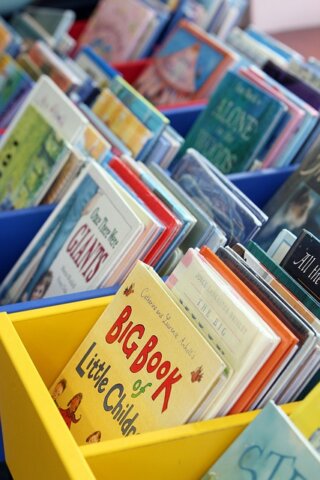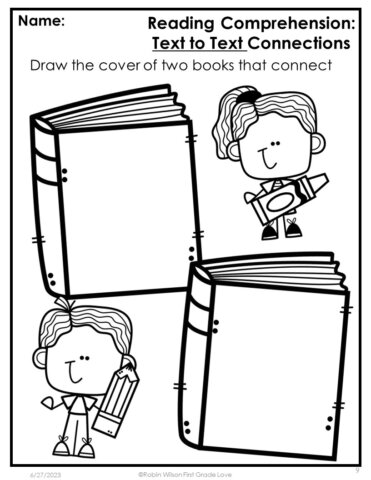Reading Comprehension Strategy: Connections Text to Text

I read a picture book to my students daily in my classroom. So when I teach this lesson, it is so fun when 2-3 days or even weeks afterwards that I have a student or two raise their hand and say, “I made a text to text connection.” That makes me teacher proud when they ‘get it.’ They understand the reading comprehension strategy: Text to Text Connections.
Even better, when students are in their own stations or centers and they are able to talk about text to text connections between themselves.
Today, I will be showing you how to teach text to text connections. You can find the other two connections in an upcoming blog post. It was just to much to put all on this single post. So go look for the other two when you are ready for them.
Also, if you want, I would love to hear your plans on how you teach this important reading comprehension skill. Please leave comments in the comment section below to share your ideas!
Before you read further, you may want to read a blog post (Making Reading Comprehension Strategies with 7 Strategies) that shows all the strategies, then come back here to break it down.
Reading Comprehension: Text to Text Connections
Lesson Plan: Teaching text to text is a fun lesson to do with primary students.
Materials: Two books similar in plot, book tub of similar books, anchor chart paper
Text to Text Lesson:

Day One: Read the first book and discuss the plot, and characters. Also, make a list of the characters, plot, and things you discussed on an anchor chart. You might also consider making this ½ a half sheet of your anchor chart, but it is ok, however, if you make two large anchor charts.
Day two: Read the second book. Discuss the plot, and characters the same as you did the day before. Make a second anchor chart, or bottom half of the first day chart.
Ask: What are some things from the text that are similar? Take some time to allow students to answer.
Say: This is called a “text to text” connection. Everyone say text to text connection. This is when we can see a connection between two texts.
Extensions to Reading Comprehension: Text to Text
1️⃣Extension One: At their seat or in station give students similar books. Let them make connections. Be dramatic and act like you didn’t do this on purpose. You don’t need many. Even if you have 2-3 of each.
Book set ideas: Don’t use the exact same book, but different in a set. You could also use 2-3 topic books with different authors.

Clifford 3-5
Berenstain Bears 3-5
Curious George
Bear books (Different authors)
Turtles (Different authors)
2️⃣Extension two: In addition, you could have them draw a picture of the front of the two books to make the connection. Label the top Text to Text or T-T. Use the following page if you need. Also, there are many pages in this resource you can use in a station to differentiate or review throughout the week or year.

3️⃣Extension three: Another idea you can do is use two post-it notes for students to make tiny pictures. They love to do this in my class. I also do this at my guided reading table.
Conclusion:
Though it can be overwhelming, teaching reading comprehension is not an insurmountable task. By understanding the “Text-to-Text, Text-to-Self, Text-to-World” approach, teachers can make sure that their students practice this skill and learn to apply it in real-world situations. With a little effort and the right tools, teachers can ensure their students are well-prepared for the future.
Help your students improve their reading comprehension skills by teaching them “Text-to-Text.” Share this post to help spread the word and start teaching this important skill.
More Information
This lesson plan can be done without any additional props other than the materials listed above. However, if you need extra support. I have a resource with this lesson plan and the additional lesson plans, Text to Self, and Text to World with worksheets all ready to go to save you time.
Click here for more information or to get! ➡️Text to Text, Text to Self, Text to World Reading Comprehension Strategies for your homeschool or classroom.
